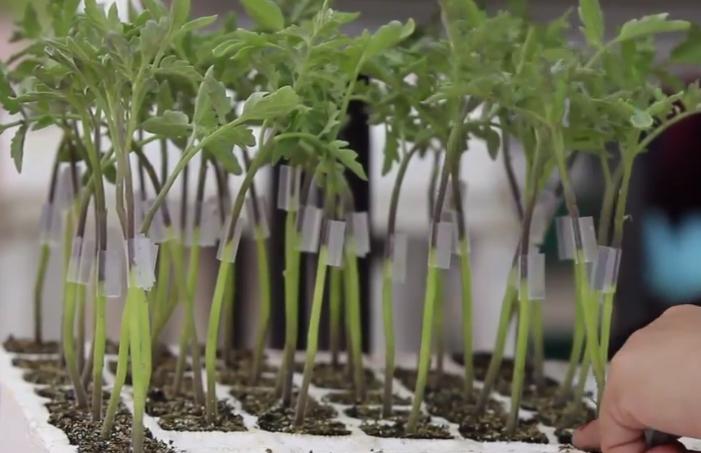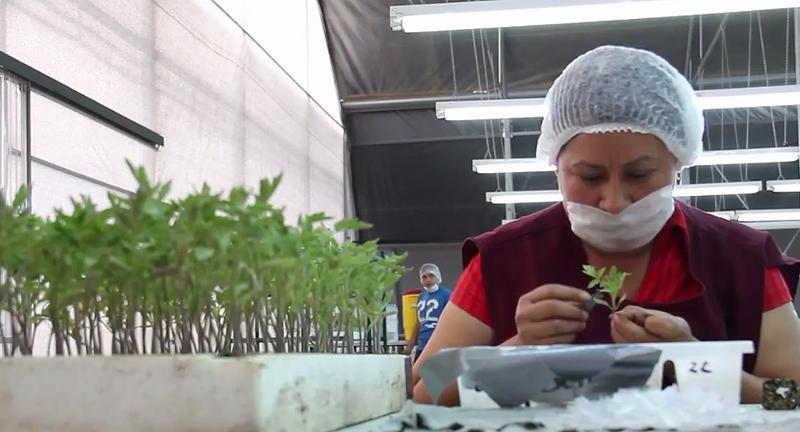Horticultural grafting boosts Mexican women while saving the ozone layer
“Grafting has changed my life. Little by little, different aspects of it are improving,” says Laura Isela, a plant grafter at Rancho Los Pinos, Baja California, Mexico. Since being trained in the technique and starting work as a grafter, she has benefitted from some life-changing experiences, such as being able to pay for higher education for her children and buy her own house.

Another grafter, Nohemi Angulo, who works at Agropecuaria Malichita in the Mexican state of Sonora, plans to start her own business. “In the future, I see myself with a business in grafting, a business in which I could train others in the grafting process.”
Hundreds of women have received training as plant grafters as part of a programme to phase out the use of ozone-depleting substances, implemented by the United Nations Industrial Development Organization (UNIDO) and the Mexican government. The vast majority of them are now experiencing a better quality of life, both professionally and personally. At work, their skills are valued as a key part of the cultivation process, and at home, their children and husbands recognize and respect their economic contribution.
Their work consists of grafting fruit and vegetable plants, mainly melon, watermelon, cucumber, tomato, pepper and chili. Grafting is a horticultural technique whereby part of one plant is joined to part of another to create a hybrid with the qualities of both. The purpose of grafting is to combine one plant’s qualities of flowering or fruiting with the roots of another that offers vigour and resilience. The technique, which has been practiced for thousands of years, has proven to be very effective in preventing plant diseases caused by pathogens present in soil.
Today, agricultural companies in Mexico are using grafting to increase crops’ strength, tolerance to fluctuating temperatures, and ability to tolerate saline (salt-affected) soils. There are numerous benefits, ranging from higher yields and extended farming seasons, to reductions in water consumption – an important factor in a region where water is scarce.
Whilst each phase of the grafting process is important, the one requiring special care is the cut. Uniting one plant’s shoot or bud with another plant’s rootstock or stem needs to be done by skilled staff and it is usually women who are selected to be specifically trained to perform this delicate work.
“Here they value me as a woman. They give priority to the fact that we are women,” explains Areli Rodríguez, a grafter at Agropecuaria Malichita, in the state of Sonora.
Grafting is also one of the most efficient alternatives to the use of methyl bromide, a gas used extensively as a pesticide for decades. Methyl bromide severely damages the ozone layer and its use is now carefully controlled by the Montreal Protocol, currently the only universally ratified instrument for the protection of the ozone layer.

In 1998, Mexico launched its National Plan for Eliminating the Consumption of Methyl Bromide. From 2011 to 2014, the Ministry of Environment and Natural Resources (SEMARNAT) and UNIDO implemented the Plan in the Mexican states of Sonora, Baja California, Michoacán and Jalisco.
Using demonstration projects, training, technical assistance and investment projects, the Ministry and UNIDO promoted the establishment of a holistic farming model based on grafting. Today, the established farming model successfully protects workers and consumers’ health, the soil, the plants, and the ozone layer, and is providing Mexican companies with greater savings and better access to international markets.
“We see a result in the international market. Demand for our products has increased thanks to the better quality,” explains Luis Rodríguez, from Rancho Los Pinos in Baja California.
Thanks to the application of the grafting technique, Mexico has phased out the consumption of 406 tons of methyl bromide. Importantly, too, it has improved the general well-being of the women, who represent the majority of the 700 people trained by the project and employed today by the companies.
UNIDO is one of the main United Nations agencies implementing the Montreal Protocol. Since 1992, it has been successfully assisting developing countries in phasing out their ozone-depleting substances with know-how, expertise, and new environmentally friendly methods and technology, grafting included.
